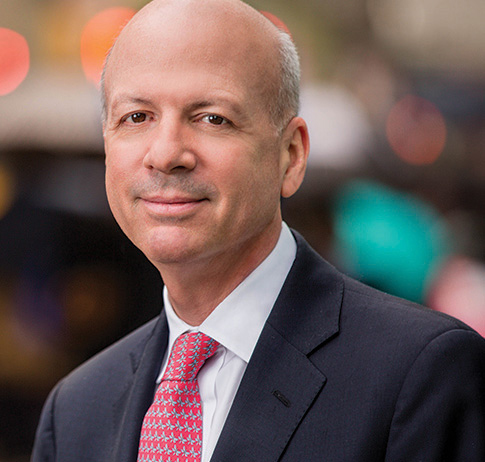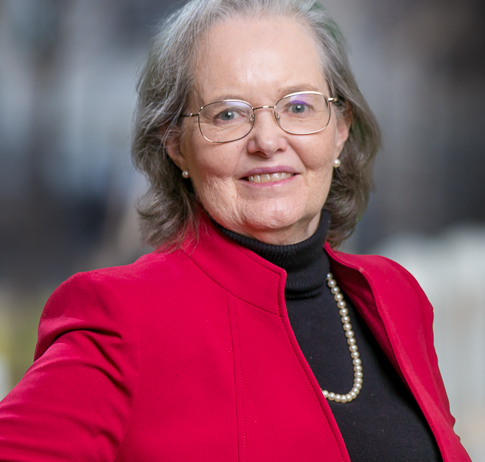M. Ridgway Barker and Patricia M. Lee co-authored this article with Joseph Bambara CIPP/US.
The International Swaps and Derivatives Association, Inc. ("ISDA"), by way of introduction, is a trade organization created by participating parties in the negotiated derivatives market. The ISDA has over 925 member institutions from 75 countries. The members comprise derivatives market participants, including corporations, investment managers, government and supranational entities, insurance companies, energy and commodities firms, and international and regional banks. The ISDA functions to promote safer and more efficient derivatives markets by developing standards like the ISDA Master Agreement and a wide range of related documentation. Wisely, ISDA has embraced trending blockchain and Distributed Ledger Technology ("DLT").
The ISDA has developed a model based on DLT that promises virtually risk-free and efficient trade processing. As mentioned in a previous article (see here), the ISDA implemented a Common Domain Model (CDM) for the clearing of interest rate derivatives using DAML (see here), an open-source smart contract language created by Digital Asset (see here) to use blockchain or DLT to persist trade data.
The ISDA CDM, coupled with DAML and DLT, provides standardization. Standardization supports innovation. CDM provides a shared source of trade data. The ISDA CDM enables enhanced transparency via a consistent representation across trades, portfolios, and events, providing enhanced risk management and trade processing capabilities. Additionally, the deployment of these DAML smart contracts has been facilitated by Digital Asset and VMware. They have created an integration platform VMware Blockchain to support DAML smart contracts. The DAML integration is commercially available as the DAML Driver for VMware Blockchain.
What does this advance in the technology mean?
The VMware Blockchain will provide the enterprise-grade, scalable infrastructure to run distributed workflows, ensuring reliability, security, and performance. Digital Asset will provide the DAML smart contract language and runtime to build decentralized applications; and Day-2 operations with application management and monitoring built into the platform for simple provisioning, comprehensive metrics and logs, and 24x7 global support, including VMware support for the DAML runtime. The Australian Securities Exchange (ASX) and Broadridge Financial Solutions have leveraged VMware Blockchain with DAML to underpin stock transfers and workflows for repurchase agreements, a combined market of over $5.5 trillion of assets. As businesses adopt this combination, we see the growth of interconnected businesses sharing DLT based data.
What are the legal challenges?
Predictably, there are legal issues associated with using smart contracts on DLT. The ISDA with R3, a DLT ecosystem, have collaborated to analyze the legal issues associated explicitly with using smart derivatives contracts on DLT. The trading of derivatives using DLT raises several questions from a private international law perspective. In particular, uncertainty about where data, assets, and counterparties are located in a DLT environment means it is necessary to understand which law would apply in each case and what would happen if there are conflicts of law. The ISDA analysis, while not conclusive, considered these issues from an English, French, Irish, Japanese, Singaporean, and the United States (New York) law perspective. Note, ISDA plans to amend its Master Agreement to address these issues with template clauses, avoiding conflicts of law problems.
The analysis focused on whether the introduction of DLT or a DLT platform provider to a traditional trading relationship might have implications for resolving contractual disputes. Some of the issues and analysis are discussed here.
The issue of whether a derivatives transaction that is documented on a DLT platform could be generally admissible as evidence in the local court was addressed? This question is obviously step one in adjudicating any contractual dispute. For example, the United States has not exercised its constitutional power to regulate the admissibility of DLT evidence in court. The states have residual power to implement their own legislation. The Federal Rules of Evidence does establish a minimum requirement in what is referred to as the 'best evidence rule,' which establishes that the best evidence must be used at trial. Rule 1002 of the Federal Rules of Evidence states, "An original writing, recording, or photograph is required to prove its content unless these rules or a federal statute provides otherwise." Several States have regulated DLT through legislation and rules. The States of Illinois, Vermont, Virginia, Washington, Arizona, New York, and Ohio have legislation that specifically governs the admissibility of DLT evidence in court. The ISDA analysis was certain across the board that the transaction in its electronic format was intelligible; it would be admissible. It was noted that parties could agree on a specific standard of evidence, which may be less stringent than the statutory jurisdictional requirement.
The issue of how to identify the legal situs, i.e., legal jurisdiction, of the digital assets for effecting payments or exchanging collateral on specific DLT platforms was addressed. As the DLT nodes can span multiple locations worldwide, it is often difficult to establish which jurisdictions' laws and regulations apply to a given application. There is a risk that transactions performed by an organization could fall under every jurisdiction in which a node in the DLT network is situated, resulting in an overwhelming number of laws and regulations that might apply to transactions. The ISDA analysis from all jurisdictions concluded that it would be unlikely that a local court would reject an express choice of law by the contracting parties in any agreement between the parties and a platform provider. The real issue was the potential challenges in identifying the precise location of digital assets and would lead to uncertainty over which jurisdiction's laws would apply. The analysis recommended that parties agree on a uniform choice of law to govern all transactions conducted on the DLT platform. The analysis came to varying conclusions. Some argued that the choice of law could be one of several places, depending on the situation. Some argued that choice of law could be the law of the jurisdiction where the real-world asset is held or, in the case of intermediated securities, the law of the jurisdiction where the account holding the collateral is located. It was also argued that the parties typically would employ a securities intermediary to maintain custody of collateral assets. In this scenario, the parties' respective rights in respect of those assets will be determined by the law specified in the account agreement with the securities intermediary.
In summary, the use and implementation of emerging DLT technology is not a question of if but when. DLT eliminates human error or fraud, as each participant has its own separate ledger. DLT removes inefficient intermediaries no longer needed for validation. DLT eliminates delays and losses caused when data is stored locally by each party. The bottom line is DLT technology will enhance the efficiency of executing and operating derivatives transactions. That said, legal issues associated with it require further consideration as market participants look to adopt DLT technology. As discussed, DLT and smart contracts offer tremendous benefits from the perspective of operational efficiencies and cost savings. Still, derivatives market participants also need full transparency on their implications for legal certainty. The combination of well-designed agreements coupled with safe and efficient technology can solve most any new challenge to our businesses and prosperity.
Our Withers attorneys can assist and educate clients from a legal and technical standpoint to incorporate these emerging technology trends safely and efficiently to help your businesses stay ahead of the competition. Please contact your regular Withers attorney or any of the authors of this piece with any questions.


